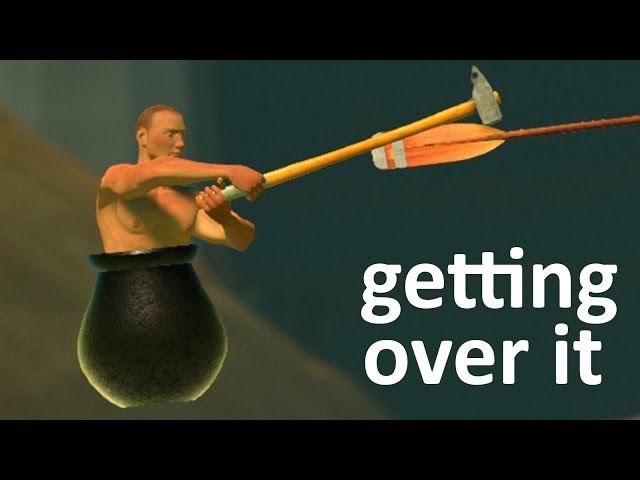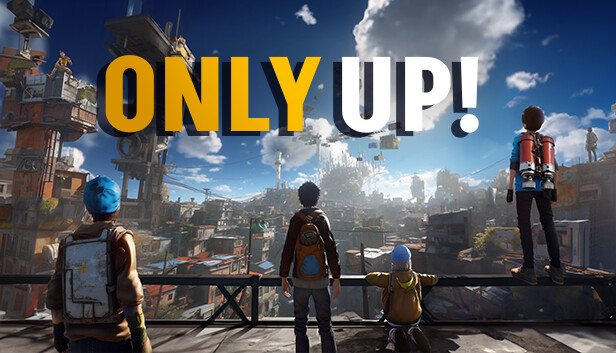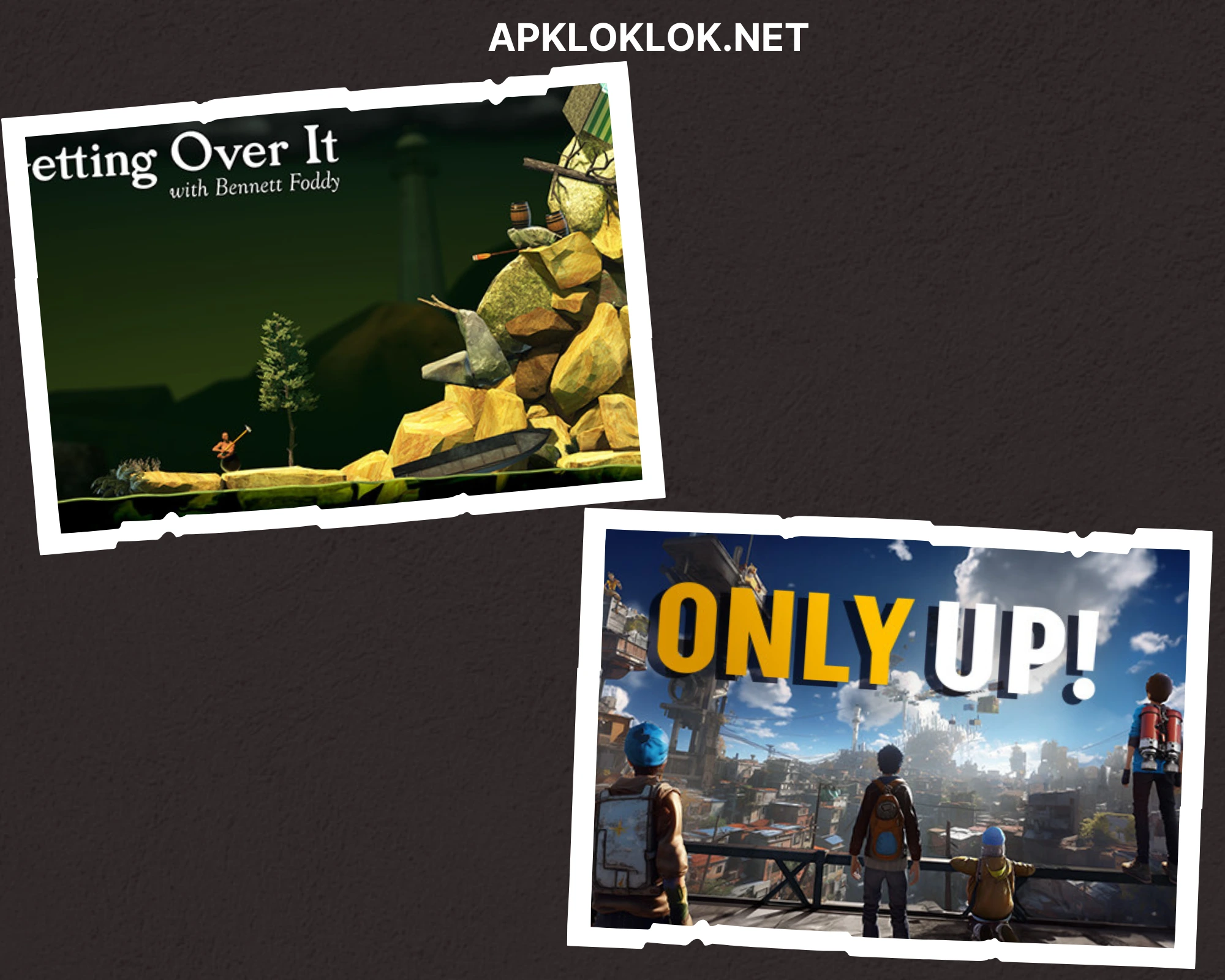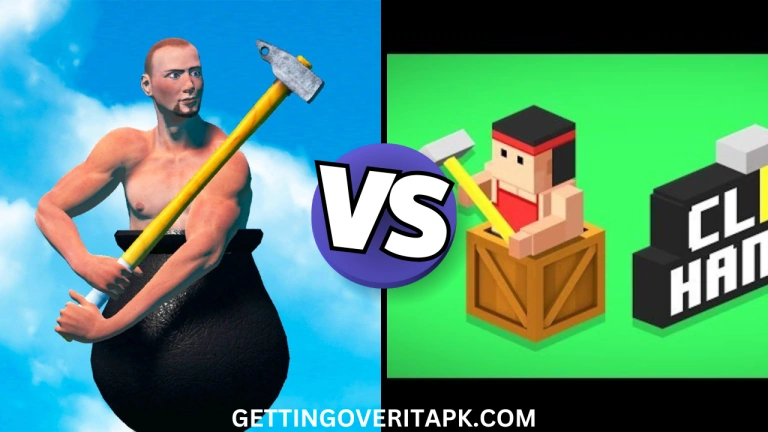Getting Over It vs Only Up: Which Game is Better?
Getting Over It and Only Up are two games that have caught the attention of gamers for their punishing difficulty and unique gameplay. Both are about climbing to extreme heights while risking falling all the way back down.
Getting Over It is a physics-based game where you control a man in a cauldron using only a hammer to climb a bizarre mountain of objects. Every movement is heavily influenced by physics, and a single wrong motion can send you plummeting back to the start. On the other hand, Only Up! is a 3D platformer that puts you in the shoes of a boy named Jack, who must leap across various surreal surfaces in a quest to ascend into the sky. The challenge lies in timing and precision rather than chaotic physics.
The essence of both games is simple: you need to climb higher, and one mistake can send you tumbling. Yet, they deliver very different feelings while doing so. Getting Over It is about frustration and philosophical reflection, while Only Up! provides a sense of exploration and discovery, despite the difficulty.
Overview of Both Games
Getting Over It

Released in 2017, Getting Over It is a physics-based climbing game developed by Bennett Foddy. You control a man sitting in a cauldron, wielding a hammer to propel himself up a surreal mountain filled with bizarre obstacles. The gameplay is notoriously difficult; one wrong move can send you tumbling back to the beginning, erasing hours of progress. This sense of constant danger and high stakes is what gives Getting Over It its addictive, rage-inducing charm.
Only Up

Only Up! follows a similar path of vertical ascent but is more of a platformer than a pure physics-based game. Players control Jack, a boy climbing through surreal environments full of random objects like floating trains, planks, and pipelines. The stakes are equally high as there are no checkpoints; one fall, and you have to climb all over again. Like Getting Over It, Only Up! demands patience and precision, but with a 3D open-world aesthetic.
Key Differences Between Getting Over It and Only Up
While both games are brutally challenging, they have significant differences in mechanics, gameplay style, and overall experience. Let’s break down the core areas where they diverge:
Gameplay Mechanics: Physics vs. Platforming
In Getting Over It every motion of your character is influenced by real-world physics. The challenge comes from mastering the hammer’s movements to climb seemingly impossible heights. Each nudge of the mouse can either send you forward or pull you back to the bottom, creating tension in every move.
On the other hand, Only Up has more traditional platforming mechanics. You use standard controls (WASD keys and spacebar for jumping) to guide Jack from one platform to another. The challenge here is less about physics and more about precision and timing. While still punishing, Only Up! gives you a bit more control over the situation compared to the chaotic physics of Getting Over It.
Graphics and Aesthetics
The graphics and art styles of these two games are also distinct.
- Getting Over It has a minimalist and abstract art style. The environments are strange but feel cohesive, with random household objects and landscape features stacked together to form a surreal mountain. The game’s simplicity adds to its sense of isolation and intensity.
- Only Up offers a more detailed and colourful world. The scenery changes as you ascend, with floating trains, pipelines, and otherworldly structures, giving the game a dreamlike quality. It feels more like a journey through a chaotic but visually engaging world, where each platform you climb is an exploration of a strange environment.
Emotional Experience: Frustration vs. Exploration
Both games are notorious for frustrating players, but the type of frustration differs.
- Getting Over It thrives on sheer aggravation. Every slip, every fall feels like a personal failure because it often sends you all the way back to the start. Bennett Foddy himself narrates parts of the game, offering philosophical musings on failure, adding to the emotional weight of your experience.
- Only Up! focuses more on exploration and discovery. While the lack of checkpoints can be equally frustrating, the varied environments and constant upward movement create a sense of curiosity and wonder. You’re not just battling the game mechanics; you’re also driven by a desire to see what’s next.
Learning Curve and Replayability
Both games require perseverance, but their learning curves differ slightly.
- Getting Over It has a steeper learning curve because the physics are unpredictable and take time to master. Progress can be painfully slow at first, but with practice, you’ll start to develop a better sense of control. The replayability lies in the challenge itself—there’s something addictive about conquering a section that once seemed impossible.
- Only Up is easier to pick up because the controls are more intuitive for anyone familiar with platformers. However, the lack of checkpoints makes progress hard to maintain, especially for newcomers. The replayability comes from the open-world design, which invites exploration and finding new paths to ascend.
Which Game is Right for You?
Choosing between Getting Over It and Only Up! depends on what kind of gaming experience you’re looking for.
- If you enjoy games that push you to your emotional limits, where each mistake feels monumental, and mastering the physics feels like a monumental achievement, then Getting Over It is the game for you. The minimalist design and philosophical commentary add depth to the frustration, making the climb feel like a metaphor for real-life perseverance.
- On the other hand, if you prefer a more exploratory experience with challenging platforming mechanics but want a game with a sense of wonder and discovery, Only Up! will likely appeal to you. The surreal environments and ever-changing visuals provide a more adventurous tone, even if the lack of checkpoints can drive you mad.
Is Only Up Like Getting Over It?
At first glance, it’s easy to compare Only Up! to Getting Over It. Both games revolve around climbing and facing the constant threat of losing all your progress. But when you dig deeper, you’ll notice they offer very different kinds of frustration.
Only Up! is much more focused on platforming, where you jump from surface to surface. It’s not so much about mastering the physics of movement but about skillfully navigating tricky jumps. Think of it as a traditional platformer but with the stakes raised by the absence of checkpoints.
Getting Over It is a pure physics game. Each swing of the hammer must be carefully calculated, and mastering its mechanics takes time and patience. The physics in Getting Over It are intentionally difficult to handle, and that’s where the main challenge comes from.
So, while both games are incredibly difficult and require perseverance, the way they deliver that difficulty is very different. Only Up! is more about timing and precision, while Getting Over It is all about mastering physics and movement.
Getting Over It vs. Only Up Review
If you’re torn between which game to play, here’s a breakdown of what each offers:
- Gameplay: Getting Over It is a test of your mastery over physics, while Only Up! is more of a traditional platformer. If you enjoy figuring out tricky movements and want a game that will test your ability to control small, precise actions, Getting Over It is your game. If you prefer platforming and don’t mind the lack of checkpoints, Only Up! might be a better fit.
- Visuals: Getting Over It has a more minimalist, almost abstract look, with random objects like rocks and furniture forming the landscape. Only Up! is more visually dynamic, with different environments and objects floating in the sky, creating a more surreal and whimsical world.
- Difficulty: Both games are hard, but Getting Over It feels harder for many because of the unpredictability of its physics. Only Up! can be equally frustrating due to the lack of checkpoints, but the controls are more straightforward.
- Emotional Impact: Getting Over It can leave you feeling emotionally drained because every fall feels personal. The game’s narrator, Bennett Foddy adds to this feeling by philosophizing about failure as you play. Only Up! is less heavy in tone, offering a more adventurous feel, but falling from great heights can still be devastating.
Conclusion
Both Getting Over It and Only Up! offer brutally hard experiences. They are games that test your patience, focus, and willingness to keep trying after every fall. While they share the common thread of endless ascent, their differences in mechanics, style, and emotional impact give each game a unique flavor.
Whether you want to conquer the philosophical mountain of Getting Over It or explore the dreamlike heights of Only Up!, both games offer unforgettable challenges that can be frustrating yet oddly satisfying. The choice between them comes down to your preferred gameplay style: chaotic physics or precise platforming. Either way, get ready for an adventure where your greatest enemy is gravity—and maybe, your own determination.



